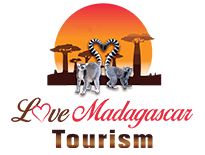About Madagascar
Officially, the Republic of Madagascar is an island country in the Indian Ocean. It is approximately at 400 kilometres (250 miles) off the East coast of Africa. At 592,800 square kilometers. Madagascar is the world’s 2nd largest island country. The nation comprises the island of Madagascar (the fourth-largest island in the world) and numerous smaller peripheral islands. Following the prehistoric breakup of the supercontinent Gondwana, Madagascar split from the Indian subcontinent around 88 million years ago, allowing native plants and animals to evolve in relative isolation.
Consequently, Madagascar is a biodiversity hotspot; over 90% of its wildlife, is found nowhere else on Earth. The island’s diverse ecosystems and unique wildlife are threatened by the encroachment of the rapidly growing human population and other environmental threats. The archaeological evidence of the earliest human foraging on Madagascar may date up to 10,000 years ago. Human settlement of Madagascar occurred between 350 BC and 550 AD by Austronesian people, arriving on outrigger canoes from Borneo. These were joined around the 9th century AD by Bantu migrants crossing the Mozambique Channel from East Africa. Other groups continued to settle on Madagascar over time, each one making lasting contributions to Malagasy cultural life.

The Malagasy ethnic group is often divided into 18 but with 20 subgroups, of which the largest are the Merina of the central highlands. Until the late 18th century, the island of Madagascar was ruled by a fragmented assortment of shifting sociopolitical alliances. Beginning in the early 19th century, most of the island was united and ruled as the Kingdom of Madagascar by a series of Merina nobles. The monarchy ended in 1897 when the island was absorbed into the French colonial empire, from which the island gained independence in 1960. The autonomous state of Madagascar since then, has undergone four major constitutional periods, termed republics. Since 1992, the nation has officially been governed as a constitutional democracy from its capital Antananarivo.
Madagascar is a member of the United Nations, the African Union (AU), the Southern African Development Community (SADC), and the Organisation Internationale de la Francophonie. Andry Rajoelina is the actual president after his election in 2018.
Madagascar belongs to the group of least developed countries, according to the United Nations. Madagascar has a life expectancy of 62.9 years. Malagasy and French are both official languages of the state, and very few people can speak English or German. The majority of the population adheres to traditional beliefs, Christianity, or an amalgamation of both. Ecotourism and agriculture, paired with greater investments in education, health, and private enterprise, are key elements of Madagascar’s development strategy.
Madagascar’s economy is currently growing but at a very slow pace. Agriculture is the main sector of the economy and employs about 80% of the country’s population. The main agricultural products of Madagascar include coffee, vanilla, sugarcane, cloves, cocoa, rice, cassava, beans, bananas, peanuts, and livestock products.
The country does have a small amount of Industry, of which the largest are: meat processing, seafood, soap, breweries, tanneries, sugar, textiles, glassware, cement, automobile assembly, paper, and petroleum.
In addition, with the rise of ecotourism, Madagascar has seen a rise in tourism and the related service sector industries.
Madagascar is considered a part of southern Africa as it is located in the Indian Ocean east of Mozambique. It is a large island that has a narrow coastal plain with a high plateau and mountains in its center. Madagascar’s highest mountain is Maromokotro with 2,876m but the highest that people put their foot is at Pic Boby in Andringitra National Park at 2,658m. The climate of Madagascar varies based on location on the island but it is tropical along the coastal regions, temperate in land and arid in the south its portions.
Madagascar’s capital and largest city, Antananarivo, located in the northern part of the country somewhat away from the coast, has a January average high temperature of 82 degrees (28°C) and a July average low of 50 degrees (10°C). Madagascar is most well-known around the world for its rich biodiversity and tropical rainforests. The island is home to about 5% of the world’s plant and animal species, about 80% of which are endemic, or native, only to Madagascar. These include all species of lemurs and about 9,000 different species of plants. Because of their isolation on Madagascar, many of these endemic species are also threatened or endangered due to increasing deforestation and development. To protect its species, Madagascar has many national parks, and nature and wildlife reserves. In addition, there are several UNESCO certified World Heritage Sites on Madagascar called the Rainforests of the Atsinanana.
The combination of southeastern trade winds and northwestern monsoons produces a hot rainy season (November–April) with frequently destructive cyclones, and a relatively cooler dry season (May–October). Rain clouds originating over the Indian Ocean discharge much of their moisture over the island’s eastern coast; the heavy precipitation supports the area’s rainforest ecosystem. The central highlands are both drier and cooler while the west is drier still, and a semi-arid climate prevails in the southwest and southern interior of the island.

Restez à l'affût des dernières actualités et des offres exclusives en vous abonnant à notre newsletter


